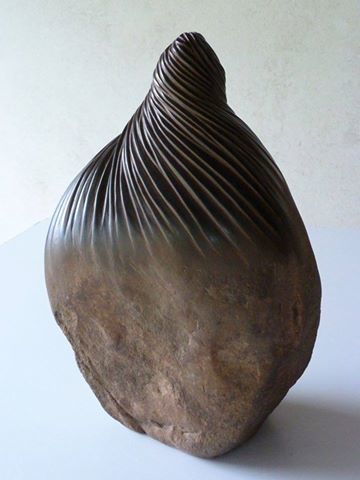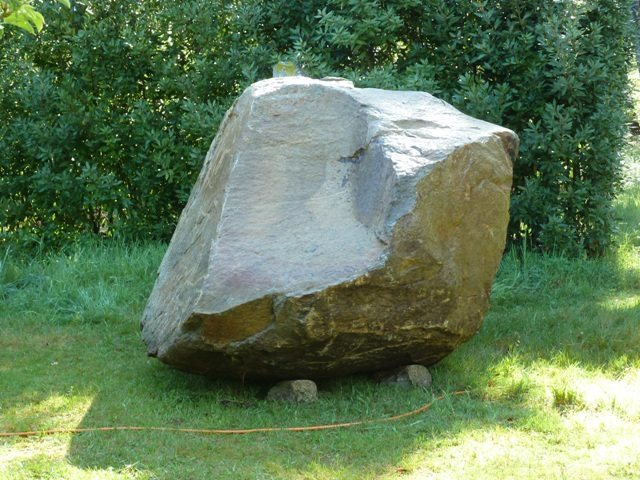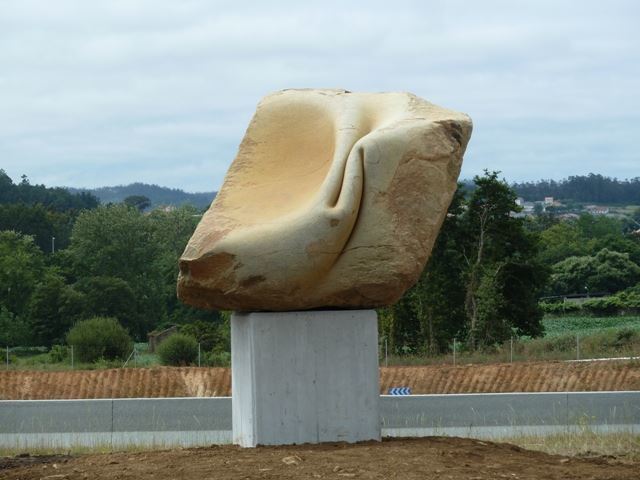Now here’s some incredible creations from stone. Does anyone know how this is done? This just blows me away.
facebook of artist Redirecting...

Now here’s some incredible creations from stone. Does anyone know how this is done? This just blows me away.
facebook of artist Redirecting...

That’s awesome. And I’m guessing that the stone is not actually folded / kneeded, but rather:
some of it is carved to look as if it is, and
more than one piece is used; the second piece is made to look like it is part of the first, but it’s actually a separate piece that is then glued to the first.
Or it is all made of foam and cleverly painted or coated.
Ok, I befriended him on facebook and saw one of his stone creations from start to finish.







Wow! I love his work! Thanks.
the comment section of the brightside article was pretty amusing. Everyone arguing over how he had done it… even after he came in and commented himself and even with the links to his facebook, where you can see the process. smh. Brilliant artist.
It’s amazing what you can do with a short-throw hammer and some chisels. 
When I originally found this art, I was pursuing a thought experiment as to whether there was any way to soften stone to make it malleable or free flowing. I had seen several structures in ancient times that looked as though the blocks had been melted to make them fit more tightly. While amorphous glass is known to flow (via gravity) and get thicker at the bottom over the centuries, crystalline materials like granite do not. Why not? It’s because the ionic bonds have already become organized and the once almost glassy liquid granite has crystallized. How could one possibly achieve malleable granite? My work centers on using a relatively new and revolutionary concept in chemistry called ionic liquids. Many of the antibacterial soaps out there use the earliest members of the ionic liquid family, the quat salts. These salts disrupt the cell walls of microbes, killing them. Newer ionic liquids do better, but all work by disrupting ionic bonds, coincidentally the same strong bonds that make granite strong and not malleable.
A few years ago I was involved in state of the art research aimed at maximizing the yield of sugars that could be obtained from renewable crop residues like corncobs, etc. Temperatures of 250-350 C were required (for 4-10 hours), along with concentrated sulfuric acid, to achieve a charred mass with about 50-60% of the sugars obtainable. 5 years later, 100% complete conversion to uncharred sugars can be achieved at room temperature (in 1-2 hours), with no acid, and with relatively minor amounts of ionic liquid. An absolute revolution in chemistry is occurring surrounding ionic liquids. Right now the technology exists to convert the roughly 40% of paper in most landfills to dissolved sugars in a years time, that run out the bottom of the landfill and are captured to make ethanol, among other things. A landfill stripped of this paper is dramatically easier to recycle other materials.
I speculate that if granite were flash heated on its surface by a fanned out laser in the presence of a suitably stable ionic liquid, the liquid would begin to penetrate into the crystalline lattice, disrupting ionic bonds and making the granite temporarily malleable. As the material cooled, it would extrude out the ionic liquid allowing the granite to harden once again. The ionic liquid would have to have a minimal molecular size to penetrate into the lattice, and would have to be stable at very high temperatures. The search is on. All thoughts are welcome.
It occurs to me that the Glowforge might allow me to test candidate materials by examining the edges where the laser touched an ionic liquid coated granite sample. A smooth, non cracked edge might indicate penetration and malleability.
Anyone choosing to explore this concept is advised to wear all possible protective gear as ionic liquids penetrate most materials and have, as yet, unknown effects on living systems.
I had always heard that but after spending a lot of time reading about glass making a few months ago, I came across this article in the Corning Museum of Glass website debunking the idea. [quote=“volivaa, post:8, topic:2641”]
amorphous glass is known to flow
[/quote]
Thanks! I too had the same cathedral window explanation provided by a chemistry teacher. I always wondered why bowls in archaeological digs weren’t the example because even if they weren’t slumpy, they should be thicker. The explanation I got was that they were but we didn’t know how thick the bottom should be whereas the windows gave an indication of what the thickness should be (although that assumed that there should be a consistent thickness & it was able to be made consistently).
Thank you. I stand corrected.
I was taught the same thing.
I have a feeling most of us may have been taught this idea.
I taught history and loved to talk about the Gothic cathedrals. I need to contact all my former students and retract what I said about windows flowing down over time. But it sounds so plausible!
Your Corning Glass link is quite persuasive, but not entirely so. I have worked on R&D projects where I was told that what I achieved was impossible according to the laws of science. I told them I agreed, but the analytical data showed the impossible product had indeed been formed. Others repeated my work and were perplexed by the product’s presence. Paradigm shifts in our knowledge do occur, and I actively seek out the strange claims as they might just have a tiny kernal of truth hidden in them. Only by actually doing the experiment can one really know. The problem with testing the flowing glass idea is that it would likely exceed my lifetime to get any result that would be meaningful. I performed one such long term project trying to prove that one could grow rubies and emeralds from solution. Mix aluminum oxide, base, water, and a coloring ion and let it set. The first experiment in a sealed container was deemed a failure after 5 years (ie no crystals). I poked a small pinhole in the lid of another and voila! A 1/10 inch crystal appeared after 5 years. After 20 years it was about 1/2 inch with beautiful facets. It is still growing here somewhere, so I will look for it and try to post a picture if I can.
I always wanted to change the coloring ion after 20 years and see if you could get mult-color gems, but never got around to it.
This was fascinating news to me, about the fallacy of glass flowing over time. I had always believed that to be true, also. In fact, long ago I remember someone telling me that was one way to tell if an old mirror was, REALLY old. The house I grew up in and the house in which I live now (1925) has double-sashed windows that are ALL wavy.
That would be awesome ![]() Can you imagine getting an email from one of your high school teachers correcting what they taught you?
Can you imagine getting an email from one of your high school teachers correcting what they taught you?